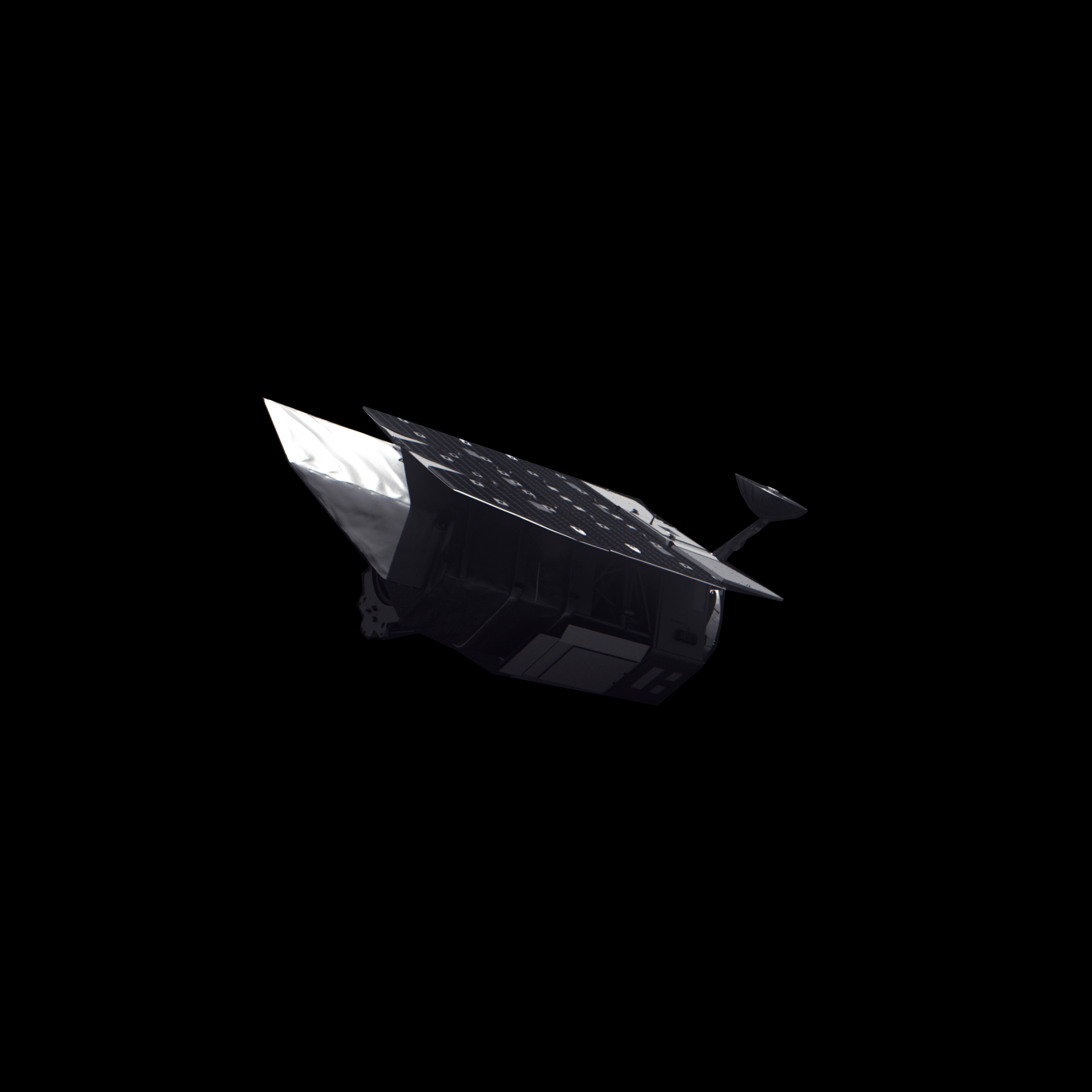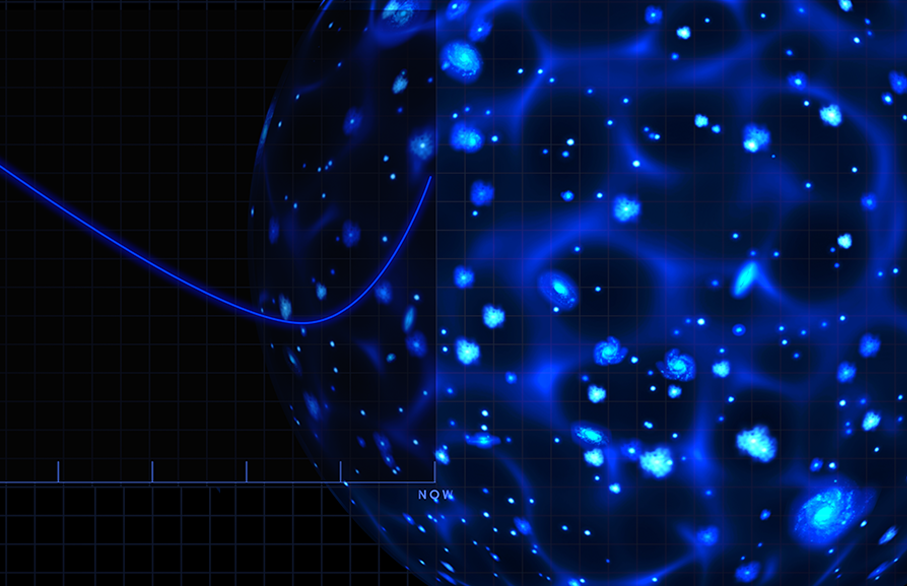Frequently Asked Questions
Quick Facts
What is the Roman Space Telescope?
The Nancy Grace Roman Space Telescope, formerly called the Wide Field Infrared Survey Telescope (WFIRST), is NASA's next flagship astrophysics mission. Roman is designed to explore everything from our outer solar system to the edge of the observable universe, including planets throughout our galaxy and dark energy.
How big is the Roman Space Telescope?
Roman will be over 42 feet (12.7 meters) long – about the length of a semi-truck trailer – and more than 14 feet (4.4 meters) wide when fully deployed. Its primary mirror is 2.4 meters (7.9 feet) in diameter, which is the same size as the Hubble Space Telescope's primary mirror. It will have sensitivity and resolution comparable to Hubble, but a field of view 100 times larger, combining excellent image quality with survey power. And it weighs 80% less than Hubble’s primary mirror, showcasing an advancement in telescope technology.
How many instruments will there be?
The Roman Space Telescope will have two instruments, the Wide Field Instrument (WFI) and the Coronagraph Instrument technology demonstration. The WFI is a 288-megapixel multi-band near-infrared camera that will provide images as crisp as the Hubble Space Telescope’s but over a field of view at least 100 times larger (0.28 square degrees). The WFI will provide wide field imaging and spectroscopy, with performance characteristics optimized for cosmology and exoplanet surveys. The Coronagraph is a system of optics, masks, self-flexing mirrors, and sensors designed to dramatically reduce the glare from distant stars and photograph planets and debris disks in orbit around them. Special sensors will actively measure and cancel out starlight in real time using the wave properties of light. This high-contrast, small field of view camera and spectrometer will cover visible and near-infrared wavelengths.
What are the science themes?
The mission will focus on dark energy and dark matter, exoplanets, and a wide range of infrared astrophysics and planetary science topics. Its surveys include a large area, high-latitude imaging and spectroscopic survey that enables high-precision cosmological measurements with weak lensing and galaxy clustering, a time-domain survey that enables discovery and light curve monitoring of thousands of Type Ia supernovae, a time-domain survey of the galactic bulge will reveal more than a thousand exoplanets in wide orbits via gravitational microlensing.” In place of the last line: “An additional suite of general astrophysics surveys will enable astronomers to pursue science that can’t be done with the mission’s core surveys. For example, astronomers could study the development of stellar populations by surveying the galactic plane and other nearby galaxies, perform additional time domain surveys tuned to find things like stellar novae and other kinds of outbursts, and conduct tandem observations with other facilities.
How will it look for dark matter, dark energy and exoplanets?
Roman will pair a wide field of view with crisp resolution and fast survey speeds to unveil vast swaths of the universe. It will perform large surveys of galaxies and galaxy clusters to see the effects of dark matter and energy on their shapes and distributions in the universe. Roman will observe more than a billion galaxies. It will also observe distant type Ia supernovae to use them as tracers of the universe’s accelerated expansion, providing an independent method to characterize dark energy. The mission will also find and study exoplanets using three techniques: microlensing, direct imaging, and transits. Roman will stare toward the crowded central region of our galaxy to observe microlensing events, which will reveal different types of worlds than other planet detection methods can typically find thanks to a quirk of gravity. Scientists expect the same set of observations to reveal more than 100,000 planets as they cross in front of (or transit) their host stars and temporarily dim the light we receive from them. The Coronagraph Instrument will demonstrate new technologies to photograph exoplanets and dusty disks around nearby stars, revealing older, dimmer, and colder worlds than direct imaging observations can currently detect.
Have the science teams already been selected for the mission?
Roman does not have a single competed science team. Input is being obtained from the science community in multiple stages. In the first stage, teams of scientists were selected in a competitive process to support mission development during Formulation (Phases A and B) and part of Phase C (see the Status FAQ below). The open community process to define the Core Community Surveys kicked off in early 2023. Competitively-selected Project Infrastructure teams were also started in 2023 and are now serving a vital role in the preliminary work by creating simulations, scouting the skies with other telescopes, preparing data analysis techniques, calibrating Roman’s components, and much more. The first call for proposals for general astrophysics surveys is anticipated a year before launch, and time allocations will follow.
Will the Roman Space Telescope data have any proprietary time?
There will be no proprietary period for the data, and 100% of observing time will be competed.
What is the status of the Roman Space Telescope?
It is currently in the System Assembly, Integration and Test, and Launch phase ("Phase D"). NASA missions undergo various phases, as follows:
- Phase A: Concept and Technology Development
- Phase B: Preliminary Design and Technology Completion
- Phase C: Final Design and Fabrication
- Phase D: System Assembly, Integration and Test, and Launch
- Phase E: Operations and Sustainment
- Phase F: Closeout
When is the Roman Space Telescope slated to launch?
Preparations are on track to target a launch in October 2026 and no later than May 2027.
What institutions are involved?
The Nancy Grace Roman Space Telescope is managed at NASA’s Goddard Space Flight Center in Greenbelt, Maryland, with participation by NASA’s Jet Propulsion Laboratory and Caltech/IPAC in Southern California, the Space Telescope Science Institute in Baltimore, and a science team comprising scientists from various research institutions. The primary industrial partners are Ball Aerospace and Technologies Corporation in Boulder, Colorado; L3Harris Technologies in Melbourne, Florida; and Teledyne Scientific & Imaging in Thousand Oaks, California.
What additional science will the Roman Space Telescope enable?
While Roman’s core surveys are each geared toward specific science goals, the observations will contain a treasure trove of additional data. NASA will make all of Roman’s data publicly available for anyone to explore the secrets of our universe. There will be no proprietary period, ensuring multiple scientists and teams can use data at the same time, which is important since every Roman observation will address a wealth of science cases. Also a substantial fraction of time will be reserved for additional observations to pursue science that can’t be done with the mission’s core surveys. Astronomers from all over the world will have the opportunity to use Roman and propose cutting-edge research.
Who will launch the mission into space?
Roman is set to launch on a SpaceX Falcon Heavy rocket from Launch Complex 39A at NASA's Kennedy Space Center in Florida. Read More
What orbit will the Roman Space Telescope be in?
It will operate from a quasi-halo orbit around the second Sun-Earth Lagrange point (L2).
What is the mission lifetime?
Under current plans, the Roman Space Telescope will have a primary mission lifetime of five years, and is being designed to support a five year extended mission (fuel is the only expendable).
Will it have a General Investigator program?
Yes. Scientists will be able to submit proposals to the General Investigator program for funding to support science investigations with Roman. These investigations could also include new observations if needed.



